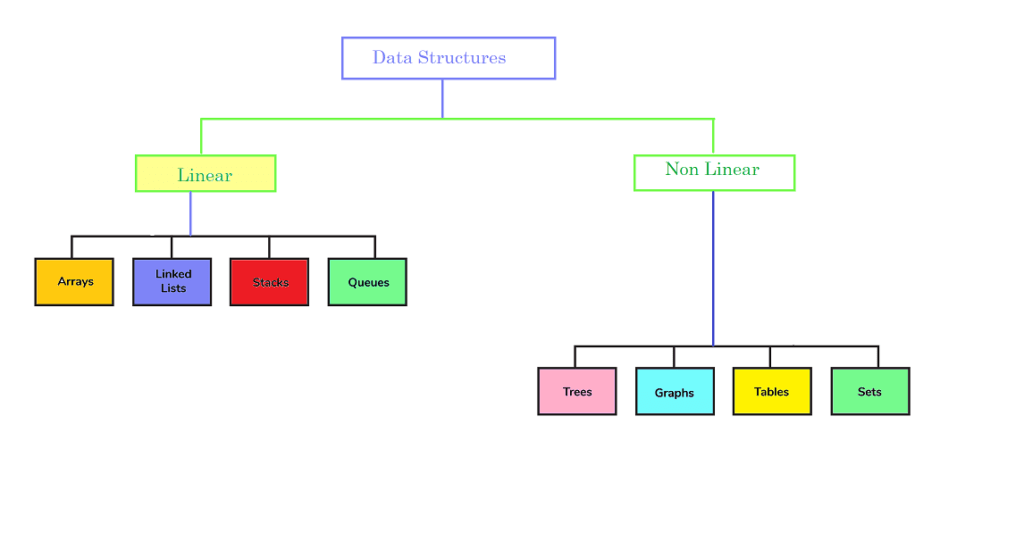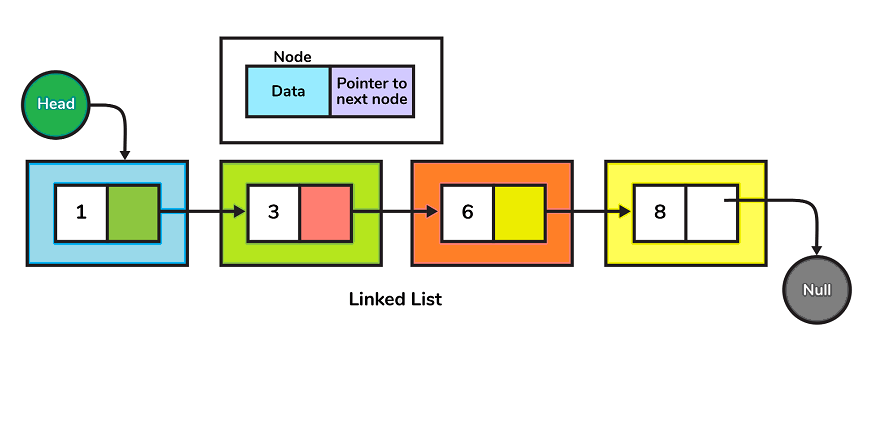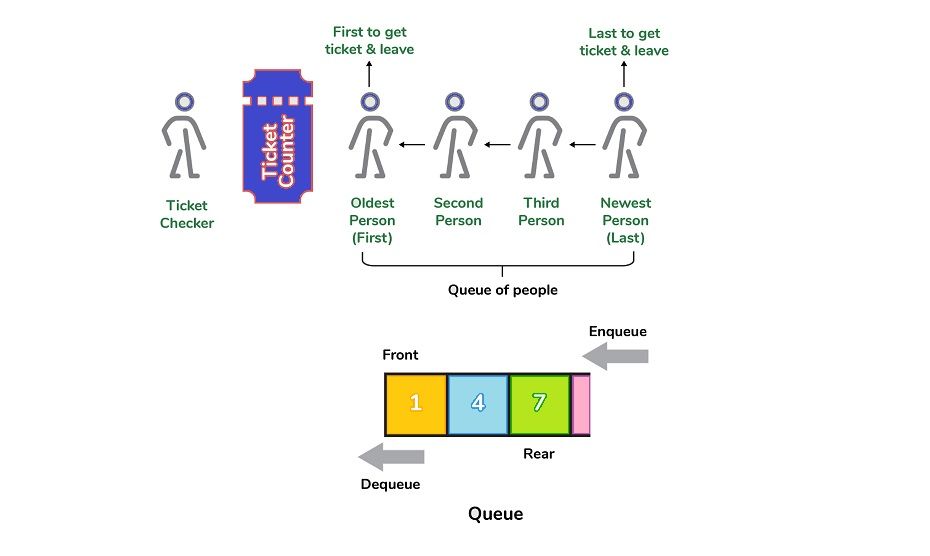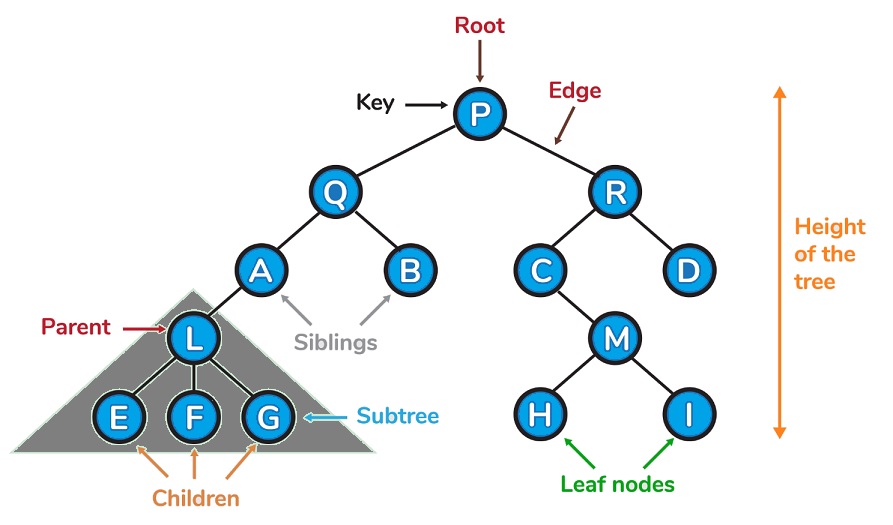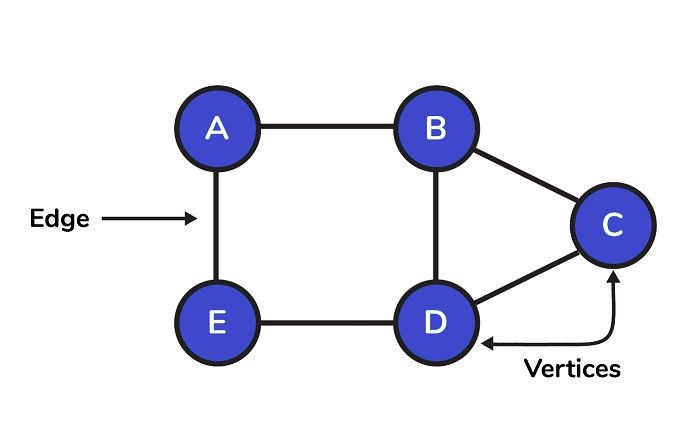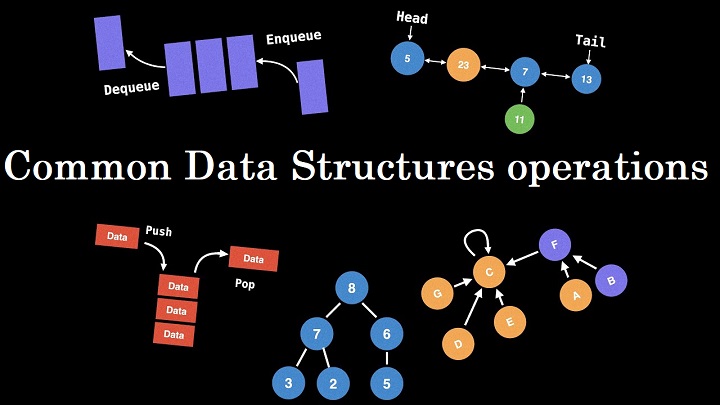What is Data Structure Classifications and Types
What is Data Structure Classifications, Types, and Applications? Data Structures are an integral component of computers that allow for data to be arranged in memory. They are responsible for efficiently organizing, processing, accessing, and storing data. This isn’t all. Different data structures each have their own advantages and disadvantages. How do you find the right data structure for your task? What does the term “Data Structure” mean? What are the different types of data structures available?
What’s Data Structure?
Table of Contents
Data structures are used to organize and store data. A data structure is a method of organizing data on a computer in a way that makes it easy to access and update.
Data structures are not just used to organize data. Data structures can also be used to store, retrieve, and process data. You will find different types of data structures in nearly every software program. It is important to have a good understanding of data structures.
Data Structures are an integral component of computers that allow for data to be arranged in memory. They are responsible for efficiently organizing, processing, accessing and storing data. This isn’t all. Different data structures each have their own advantages and disadvantages. How do you find the right data structure for your task? What does the term “Data Structure” mean? What are the different types of data structures available?
We’ve got you covered. This comprehensive list covers everything you need to know about data structure. It includes information on the classifications of data structures and the uses of each type. We will be discussing every aspect of each structure in this article to help you select the right one.
Data Structure:
Data structure is something we already know. People often get confused about data type and structure. Let’s look at some differences between data structure and data type to clarify.
| Type of data | Data Structure |
|---|---|
| Data type refers to the format of a variable that can assign a value. It indicates that the variable assigned the value of the given type will only. | Data structure can be described as a collection of different types of data. The entire data can be represented by an object that can be used throughout the program. |
| It can be valuable but it cannot hold data. It is therefore dataless. | You can store multiple types of data in one object. |
| Abstract implementation is the process of implementing a data type. | Concrete implementation refers to the implementation of data structures. |
| Data types are not complicated in any way. | Time complexity is an important aspect of data structure objects. |
| The value of data types is not stored as it represents only the data type that can be stored. | Data structures are data that the data and their value take up space in the main memory of the computer. A data structure can contain multiple types of data in one object. |
| Examples of data types are int and float. | Data structure examples are stack, queue, tree, etc. |
Data Structure Classification:
Data structure can be used in many ways throughout our day. Many data structures can be used to solve various mathematical and logical problems. Data structure is a way to organize large amounts of data and make them easy to process in a short time. Let’s take a look at the different data structures used in different situations.
- Linear data structure: A linear data structure is a data arrangement in which data elements are arranged sequentially (or linearly) and where each element is attached with its next and previous adjacent elements. Linear data structures include stack, queue, linked lists, and array.
- Static Data Structure:Static has a fixed size memory. Accessing the elements of a static structure is much easier.
An array is one example of this data structure. - Dynamic Data Structure: In dynamic data structures, the size of the data is not fixed. You can update it randomly during runtime, which could be efficient in terms of memory (or space) complexity.
Some examples of this data structure include queue, stack, and so on.
- Static Data Structure:Static has a fixed size memory. Accessing the elements of a static structure is much easier.
- Nonlinear data structure:Data data structures in which data elements aren’t placed sequentially or linearly are known as non-linear. Non-linear data structures are not able to traverse all elements in one run.
Trees and graphs are two examples of non-linear data structure.
Data Structure is Required
The data structure and the algorithm synthesis are dependent on each other. The data presentation should be simple enough for both the developer and the user to understand it.
Data structures make it easy to organize, retrieve, manage, and store data.
Below is a list listing the data requirements.
- Modifying data structure is simple
- It takes less time.
- Storage memory space can be saved.
- It is simple to represent data.
- Access to large databases is easy.
Arrays:
An array is a linear data format that stores items at contiguous memory locations. It is used to store multiple items of the exact same type in one location. This allows for fast processing of large amounts of data. A subscript of 0 is used to index the first element of an array. An array can be used for a variety of operations, including Searching and Sorting, Inserting.
Characteristics for an Array:
An array can have many characteristics, such as the following:
- Arrays are based on an index-based data structure that allows for easy identification of each element in the array using the index.
- An array can be used efficiently to store multiple values of the exact same data type.
- A two-dimensional array is also a good option for complex data structures.
- An array can also be used to implement other data structures such as Queues and Heaps, Stacks, Hash tables, and Heaps.
- It is easy to search an array.
Applications of the Array:
These are some examples of different applications for an array:
- A matrix problem can be solved using an array.
- An array can also be used to implement database records.
- It is useful in the implementation of a sorting algorithm.
- It can also be used to implement other data structures such as Queues and Heaps, Stacks, Hash tables, Heaps, and Queues.
- A array can be used to schedule CPUs.
- It can be used in computer lookup tables.
- Speech processing can use arrays where each speech signal is an array.
- An array also displays the screen of the computer. Here we use a multidimensional array.
- This array is used in many management systems, such as libraries, students, parliament, and others.
- This array is used to book tickets online. This array displays contacts on a cell-phone.
- Online chess allows players to store both their past and current moves. It is a hint at position.
- Save images in a particular dimension on the android like 360*1200
Real-Life Applications for Array:
- A array is often used to store data that can be used for mathematical computations.
- It is used for image processing.
- It can also be used for record management.
- Real-life examples of arrays can also be found in book pages.
- It’s also used to order boxes.
You want to learn how to create arrays? For the best practice, you can use our curated lists and articles:
Linked List:
A linked list is a linear data structure that does not contain elements at the same memory location. As shown in the image below, linked lists are created using pointers.
Types of linked lists:
- List that is only linked
- Doubly linked List
- Circular linked list
- Doubly circular linked lists
Characteristics for a Linked List:
The following are some characteristics of a linked list:
- To store links in a linked list, you will need extra memory.
- It is not necessary to know the dimensions of the elements when initializing a linked list.
- Linked lists can be used to implement graphs, queues and stacks.
- Head is the first node in the linked list.
- Always, NULL is always indicated by the next pointer from the last node.
- It is easy to insert and delete items from linked lists.
- Each node in the linked list is composed of a link/pointer that points to the next node.
- The linked list can easily shrink or expand at any time.
Applications from the Linked List:
These are some examples of different applications for linked lists:
- Linked lists can be used to implement graphs, queues and stacks.
- To perform operations on long integers, Linked Lists are used.
- It is used to represent sparse matrixes.
- It is used for linked allocation of files.
- It aids in memory management.
- It is used to represent Polynomial Manipulation, where each polynomial term corresponds to a node of the linked list.
- Image containers can be displayed using Linked Lists. The user can view past, current and next images.
- These are used to save the history of the page visited.
- They can be used to undo operations.
- In software development, Linked is used to indicate the syntax of a tag.
- To display social media feeds, Linked lists can be used.
Real-Life Application of a Linked List:
- Round-Robin scheduling uses a linked list to track the turn in multi-player matches.
- It is used in the image viewer. You can access the previous and subsequent images by clicking on the previous or next buttons.
- Songs are linked to each other in a music playlist.
You can get started by creating a linked list. For the best practice, you can use our curated articles or lists:
Stack:
Stack is a linear data format that orders operations in a specific order. LIFO (Last In First Out) is the order. Only one end is capable of retrieving or entering data. Push and pop operations in a stack allow data to be entered and retrieved. You can perform a variety of operations in a stack: Sorting, Reversing a stack with recursion, Sorting and Deleting the middle part of a stack.
Characteristics for a Stack:
Stack comes in a variety of different forms, which include the following:
- Many algorithms use Stack, including Tower of Hanoi, tree traversal and recursion.
- Stack can be implemented using arrays or linked lists.
- It is the Last In First Out operation. The element that is inserted first will pop into last, and vice versa.
- At one end, i.e. The stack’s top.
- If stack’s allocated space is full and stackers still attempt to add elements to it, stack overflow will occur.
Applications of Stack
These are some of the different applications for Stack:
- The stack data structure is used for evaluation and conversion of arithmetic formulas.
- Recursion uses stack.
- It is used to check parenthesis.
- Stack is also used to reverse a string.
- Memory management is done using stack.
- It can also be used to process function calls.
- The stack can be used to convert expressions between infix and postfix.
- The stack can be used in word processors to perform undo and redo operations.
- The stack is used by virtual machines such as JVM.
- The media players use the stack. It is useful to play the previous and next song.
- Recursion operations use the stack.
Real-Life Applications of Stack:
- A stack in real life is a layer of plates placed one over the other. You can remove a plate from the pile and take the one on top. This is the plate that was most recently added to the pile. To get the plate at the bottom, you will need to remove all plates that are on top.
- To keep track of sites previously visited, browsers use the stack data structure.
- Call log in mobile also uses stack information structure
Get started with Stack For the best practice, you can use our curated lists and articles:
Queue:
Queue is a linear structure of data that follows a specific order in which operations are performed. The order of operations is First in First Out (FIFO). The data item that is first stored will be accessed first. This means that retrieving and entering data can be done from more than one place. A queue is a collection of consumers waiting to be served. Queue can perform different operations, such as Reversing a queue (with or without recursion), and Reversing the first K elements in a Queue. A few basic operations are performed in Queue: enqueue and dequeue; front, rear; etc.
Queue Characteristics:
Queue can have many different characteristics, such as the following:
- Queue is a First In First Out (FIFO) structure.
- All elements that were inserted prior to the Queue element must be removed in order to remove it.
- A queue is an orderly list of elements with similar data types.
Queue Applications:
These are some examples of Queue applications:
- Queue is used to handle website traffic.
- It allows you to keep the playlist in media players.
- Queue is used to handle interrupts in operating systems.
- It allows you to serve requests for a single shared resource such as a printer or CPU task scheduling.
- It is used for data asynchrony, such as file IO and sockets. It is used in asynchronous data transfer for e.g. pipes, fileIO, sockets.
- Queues can be used to schedule jobs in the operating system.
- Social media allows you to upload multiple photos or videos at once.
- This data structure is used to send an e mail queue.
- These are used to handle website traffic at once.
- To switch between applications in the window operating system
Queue Real-Life Applications:
- An example of queue in real life is a single-lane, one-way road. The vehicle that enters first will then exit first.
- You can see a more concrete example in the queue at the ticket window.
- A queue at a cashier’s counter is another example of a queue.
- People riding an escalator
Queue is easy to use. For the best practice, you can use our curated lists and articles:
Tree:
Trees are hierarchal, non-linear data structures that have elements arranged in a tree-like fashion. The root node in a tree is the highest node. Each node has data. Data can be any type. It is composed of a central node and structural nodes. Sub-nodes are connected by edges. Because it is non-linear, different tree data structures make it easier to access the data. There are many terminologies for trees, such as Node, Root and Edge, Height of the tree, Degree of the tree, etc.
There are many types of Trees.
- Binary Tree
- Binary Search Tree
- AVL Tree,
- B-Tree, etc.
Characteristics for a Tree:
The following are some of the many characteristics that trees have:
- A tree can also be called a Recursive Data Structure.
- The length of the path from the root node up to the leaf node in a tree is called the Height of the Root.
- One can calculate the tree’s depth by looking at the nodes from the top. The root node is 0.
Applications of Tree
These are some of the many uses for Tree:
- Heap can be described as a tree data structure implemented with arrays and used to implement priority queues.
- B-Tree, B+ Tree and B+ Tree can be used to index databases.
- Syntax Tree is used to scan, parse, generate code, and evaluate arithmetic expressions within Compiler design.
- K-D Tree, a space partitioning tree, is used to organize points within K-dimensional space.
- Spanning trees are used to create routers for computer networks.
Tree Applications for Real Life:
- Game Development is made easier by tree data structure.
- It is also useful for indexing databases.
- Decision Tree is a machine learning tool that can be used for decision analysis. It is a flowchart-like tool that aids in understanding data.
- Domain Name Server also uses tree data structures.
- Most trees are used for social networking sites.
Tree is the best way to get started. For the best practice, you can check out our lists and articles.
Graph:
A graph is a nonlinear data structure. It consists of edges and vertices. It is composed of a finite number of vertices as well as a set of edges connecting a pair nodes. The graph is used to solve complex and difficult programming problems. There are many terminologies available for graph, including Path, Degree and Adjacent Vertices, Connected Components, etc.
Characteristics for Graph:
Graph can have many different characteristics, which are:
- The Eccentricity of a vertex is the maximum distance between it and all other vertices.
- The central point of the graph is the vertex with the least Eccentricity.
- As the radius of a connected diagram, it is defined as the minimum value of Eccentricity for all vertices.
Applications of Graph
These are some examples of Graph applications:
- The flow of computation is represented by graph.
- It is used to model graphs.
- Operating system uses Resource Allocation graph.
- It is also used in the World Wide Web, where the web pages are the nodes.
Real-Life Application of Graph:
- Google Maps is one of the most popular examples of graphs in real life. The graph shows cities as vertices, and the paths connecting them as edges.
- A social network is also a real-world example for a graph in which every person is a node and all their friends are edges.
- You can also use a graph to study molecules in physics or chemistry.
Get started with Graph For the best practice, you can use our curated lists and articles:
Conclusion
These are the most popular data structures. However, there are other data structures that are used in Computer Science such as policy-based data structures . Each data structure has its advantages and disadvantages. It can be costly to choose the wrong one. It is important to first understand the needs of the job and then choose the right data structure.
Also Read :

